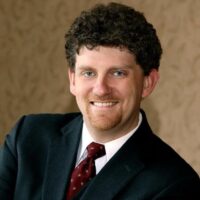Summer has begun, and protestors continue to harass the homes of Supreme Court Justices Amy Coney Barrett and Brett Kavanaugh in hopes of intimidating them into switching their votes in support of the leaked Dobbs opinion overturning Roe v. Wade. If Attorney General Merrick Garland were as concerned about combating threats to our institutions as he purports to be, he would be bringing criminal charges against every single individual who pickets in front of the justices’ residences under 15 U.S.C. §1507.
That statute declares that “[w]hoever, with the intent of . . . influencing any judge . . . pickets or parades in or near a building housing a court of the United States, or in or near a building or residence occupied or used by such judge . . . shall be fined . . . or imprisoned not more than one year.” While some have suggested this law is unconstitutional under the First Amendment, the Supreme Court’s own precedent holds otherwise, and for good reason.
In Cox v. State of Louisiana, 379 U.S. 559 (1965), the Supreme Court considered a First Amendment challenge to a Louisiana state law modeled after §1507 and identical to the federal law in all of its relevant language. In a 9-0 decision on this point, the Supreme Court rejected the argument that the law violated the First Amendment. (While four justices — Hugo Black, Tom Clark, Byron White, and John Marshal Harlan II — filed dissenting opinions, these dissents were unrelated to the law’s validity under the First Amendment).
It is critical to note that this decision came down during the heyday of the liberal Warren Court, so it cannot be written off as the alleged rantings of a conservative court. What’s more, the court’s opinion was written by one of its most prominent liberals at the time — Justice Arthur Goldberg. Even more notably, Justice Goldberg had clerking for him at the time of the Cox decision the future Justice Stephen Breyer, then a recent Harvard Law graduate. Accordingly, a good chance exists that Justice Breyer himself played a major role in drafting the opinion.
Not a Violation of the First Amendment
Writing for the court, Justice Goldberg minced no words in emphasizing that the law in question did not amount to a violation of free speech under the First Amendment. He noted that “[w]e deal in this case not with free speech alone, but with expression mixed with particular conduct” (Cox, 379 U.S. 563).
Specifically, the statute “prohibits a particular type of conduct, namely, picketing and parading, in a few specified locations.” As such, it amounted to “a statute narrowly drawn to punish specific conduct that infringes a substantial state interest in protecting the judicial process.”
The “state interest in protecting the judicial process” was central to Cox’s holding. In words that have particular relevance for today, Justice Goldberg ruled that “[t]here can be no question that a State has a legitimate interest in protecting its judicial system from the pressures which picketing near a courthouse might create… Since we are committed to a government of laws, and not of men,” he continued, “it is of the utmost importance that the administration of justice be absolutely fair and orderly.”
Indeed, “the unhindered and untrammeled functioning of our courts is part of the very foundation of our constitutional democracy.” Procedural due process guarantees this functioning of the courts, and consequently “exclude[s] influence or domination by either a hostile or friendly mob,” Goldberg wrote in the ruling.
Mob Rage and Intimidation Tactics
In short, nothing in the First Amendment prohibits reasonable attempts to criminalize mob rage and intimidation tactics aimed at the judiciary. The entire purpose of the judiciary is to decide cases according to the law as opposed to public pressure.
Yet mob rage against the justices is exactly what we have been witnessing ever since the Dobbs leak, culminating in a man attempting a suicide mission to assassinate Justice Kavanaugh in his own home. While Garland has filed charges against the would-be assassin, this is not even close to enough to fulfill his obligations under the law. By failing to denounce the attempts to intimidate the justices at their homes when they first began, and by failing to prosecute this conduct, Garland has in effect given the mob a free pass.
Garland is a former federal appellate judge. One would think that he would appreciate the need to protect the judiciary from what many on the left apparently hope will become mob rule. If he is concerned about First Amendment violations, that concern is groundless in light of Cox. Until he begins taking this matter more seriously, there is no reason to suppose the attempts at intimidation against the Supreme Court will cease.








